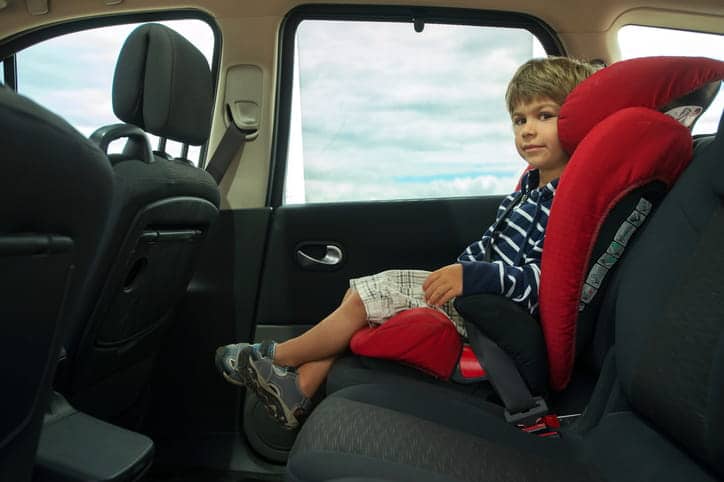As a parent, you want the best for your children. You want to ensure that they’re safe in the car in case of an accident. After your kids outgrow their car seats, the next step is to use a booster seat until they have grown enough to use the standard seat and seat belt that comes with your vehicle. However, knowing when to use a booster seat and how to use it safely can be confusing.
Using the wrong booster seat for your child’s age or size can put them at risk if you’re ever involved in a car accident. Here’s what you need to know about height and weight for booster seat Florida laws.
If you or your child was hurt in a crash, you deserve justice. Contact our Tampa car accident attorneys for a free consultation.
What is a booster seat for the car?
While children are still very young, Florida law requires the appropriate safety belts and child restraints to prevent injuries from a car crash. It starts with rear-facing infant car seats and baby car seats before progressing to forward-facing toddler car seats. The last step before a child can ride in a car without special safety restraints is the booster seat. A booster seat raises a child up enough to use the vehicle’s seatbelt in the correct position.
Are there different kinds of car booster seats?
There are different types of booster seats to meet the safety needs of your child, including:
- High-back belt-positioning booster – This booster seat includes a back section that goes behind your child to provide head support when the vehicle’s seats do not. It also puts the seatbelt at the right height to be effective.
- Backless booster – A backless booster seat only utilizes the part that your child sits on because your car’s seat or headrest gives enough head support. It also boosts the child high enough for the seatbelt to function optimally in the event of an accident.
- Combination booster seat – The combination booster gives you the option to use a built-in harness or belt-adjusting booster to safely restrain your child.
- All-in-one seat – This type of seat starts as a rear-facing seat and transitions into a forward-facing harness seat and booster as your child grows.
If you live in Florida, the booster seat you should use will depend on your child’s age. Refer to Florida car seat laws to get a better idea of the requirements for your child.
What is the recommended height and weight for a booster seat?
When your child gets too big for the car seat, it may be time to transition to a booster seat. Check your car seat manufacturer’s weight and height limits to see if your child has outgrown it. Using a front-facing harness seat when your child exceeds the limits is unsafe and could leave them vulnerable to injuries. If you find yourself in this situation, a belt-positioning booster is the next option.
Children who are too big for car seats but are too small to use the vehicle’s seat belt will need to sit in a booster seat. Typically, children will outgrow their booster seats between the ages of eight to 12 years or when they reach the height of 4 feet 9 inches. Minors between the ages of six and 17 must wear a seatbelt in Florida.
According to FLA. STAT. § 316.613, children between the ages of four and five must use the appropriate safety restraint, which may include:
- A separate carrier
- An integrated child seat
- A booster seat
Why is a booster seat important?
Booster seats are crucial to protecting your child while in the car. A booster ensures that your vehicle’s seat belt goes over the child’s lap and shoulder in the correct position to prevent injuries from a car crash or impact.
How do I install a car booster seat?
Most booster seats do not need to be attached to your vehicle. The booster seat simply sits in place on top of your vehicle’s seat. While the vehicle is in operation, the booster is held in place when your child is in the seat and buckled in with the car’s seat belt. If you prefer to have a booster seat that can be secured to the car, there are some options on the market. However, it is not necessary.
Are there exceptions to Florida booster seat requirements?
FLA. STAT. § 316.613 shares some situations in which a booster seat may not be necessary — for example, if a child is being transported by an emergency vehicle or has a medical condition that would exempt them from a child restraint. Also, you may be exempt from the rules if your child is transported by a person who is not the child’s immediate family and does not have the proper child restraint in their vehicle.
Booster seats and car accidents
Protect your child by driving a safe car and using the proper child safety restraint for their size and age. The National Highway Traffic Safety Administration offers a car seat finder to help you search for the right one.
If your child was injured in an accident while sitting in a booster, it’s possible that you may qualify to claim compensation. At Jack Bernstein, Injury Attorneys, we are here to answer all of your questions. We can help you understand your rights and know your options if your child is injured in an auto accident. We will be with you every step of the way and work to get you the compensation you deserve.
Contact our team of car accident attorneys to schedule a free consultation.
Sources:
Anzilotti, A. (2023). Booster Seat Safety.
Car Seats: Information for Families. (2023).
Safety Belts and Child Restraints. (2023).


